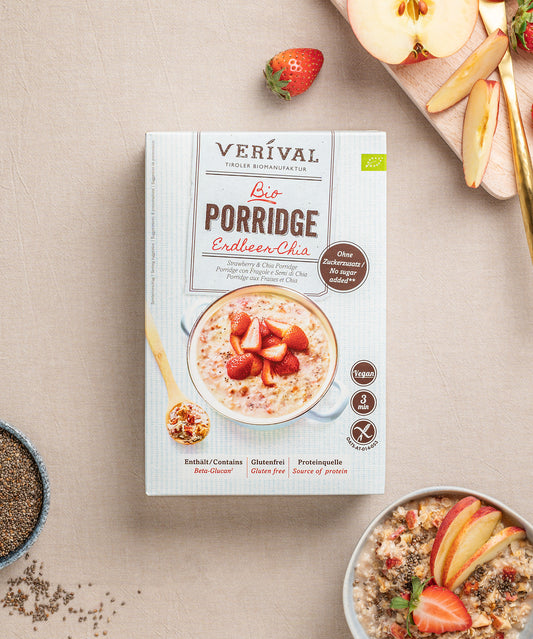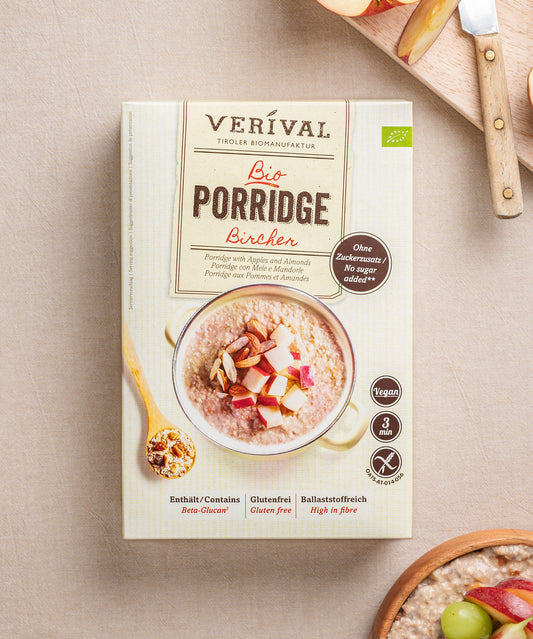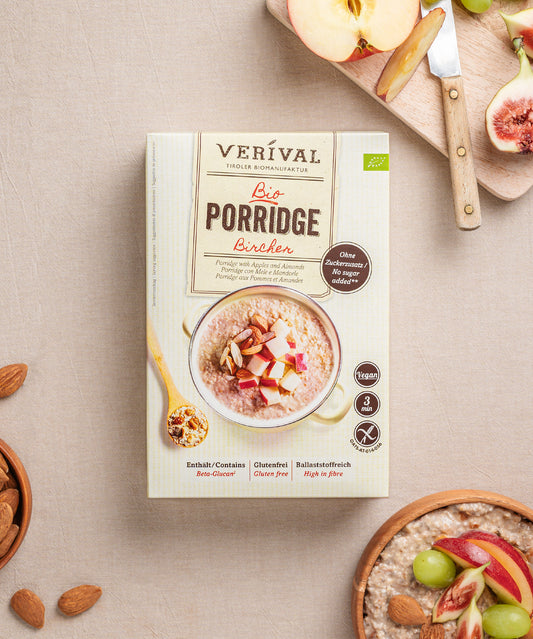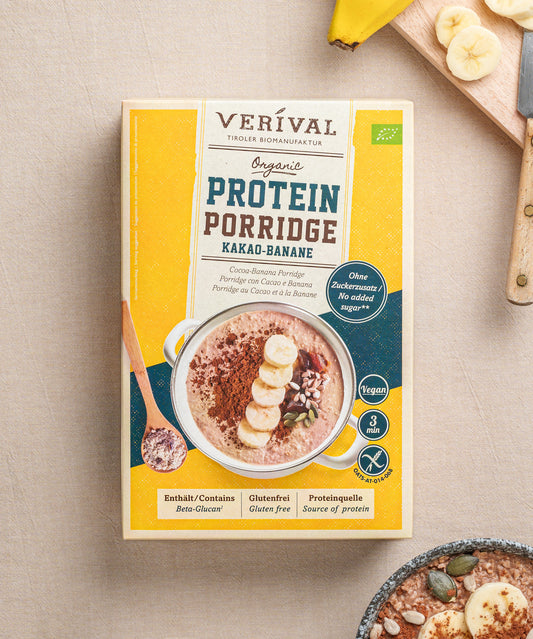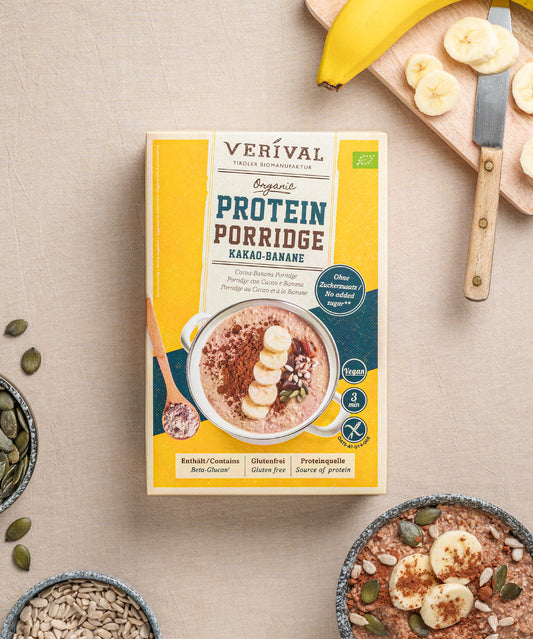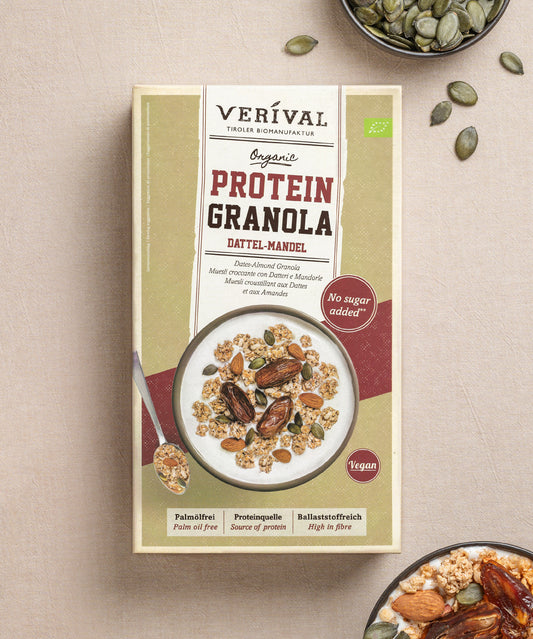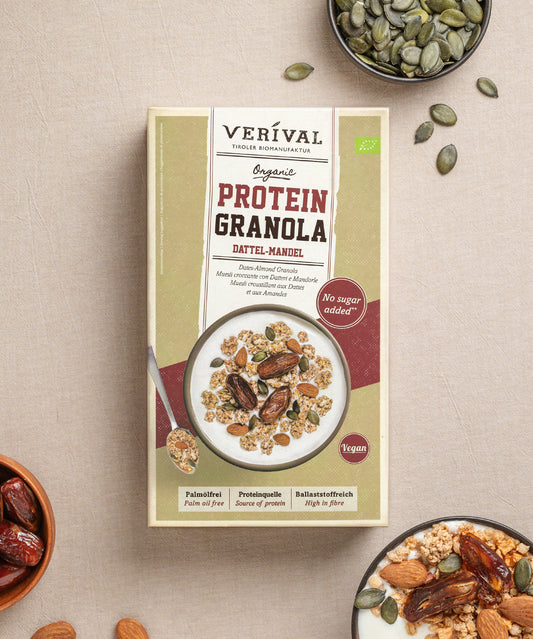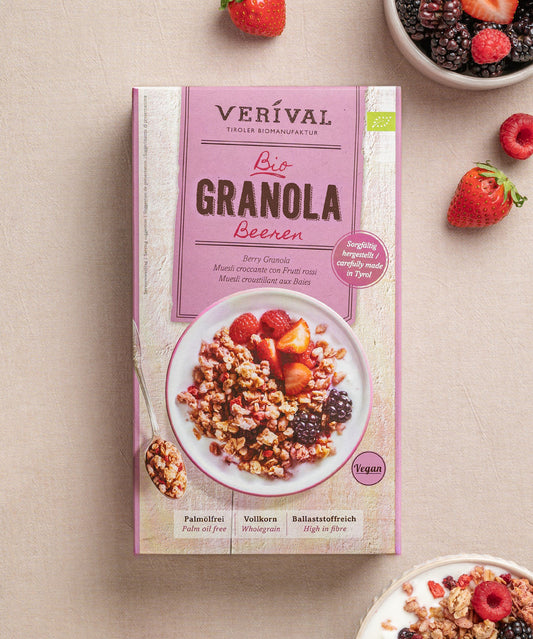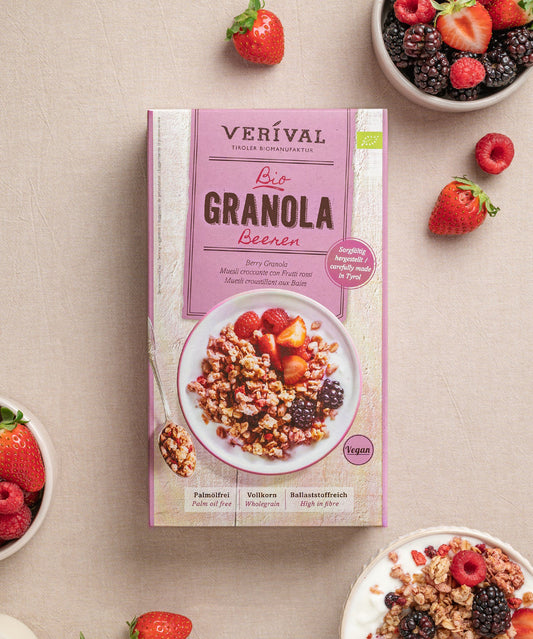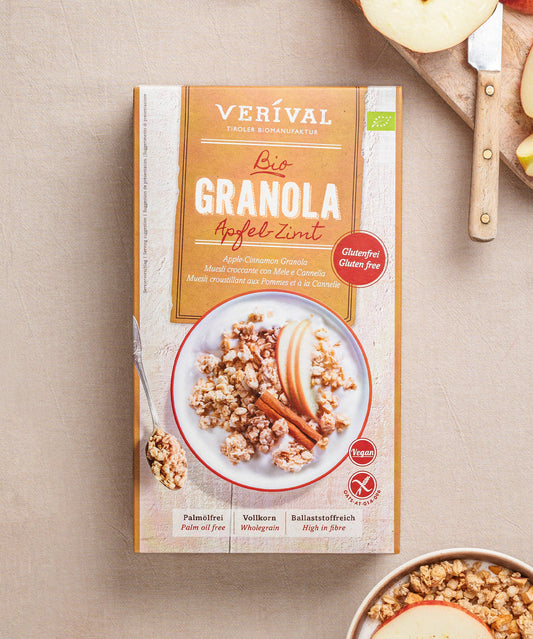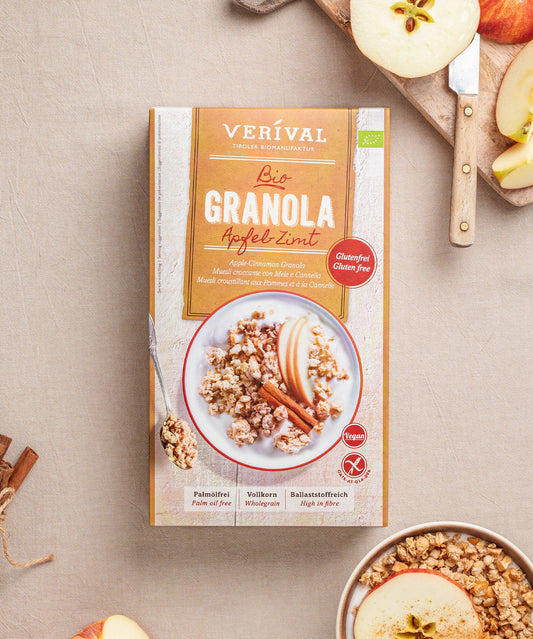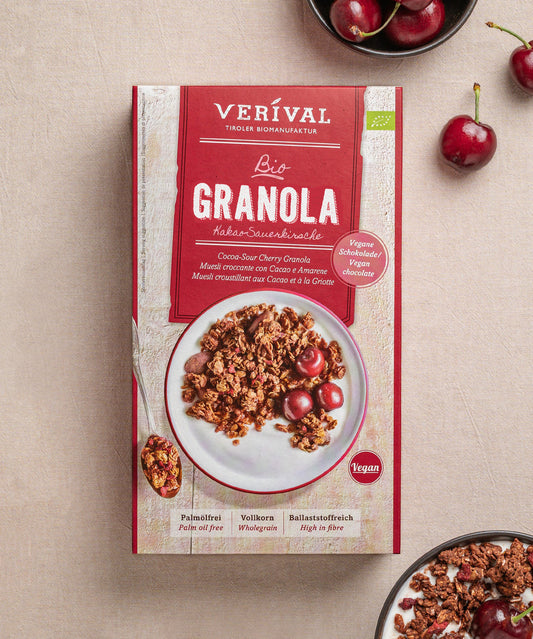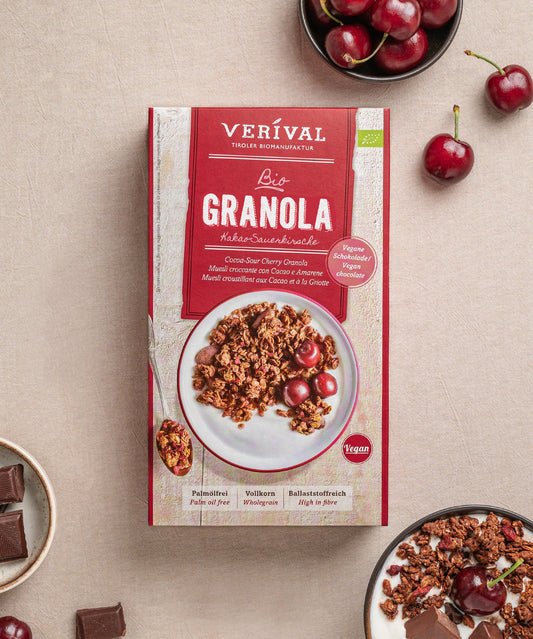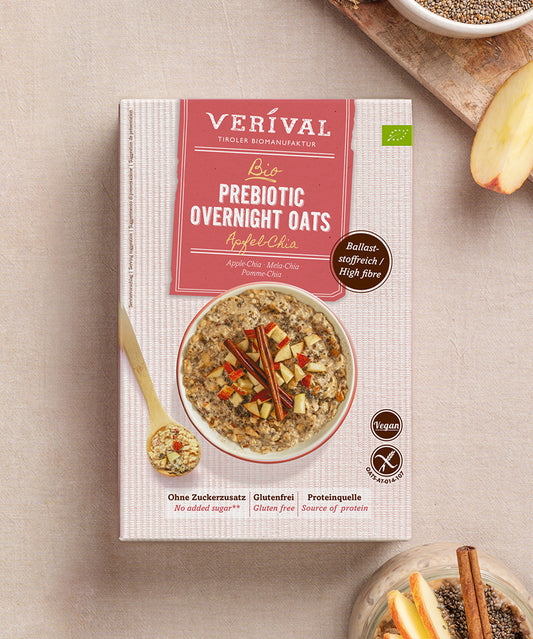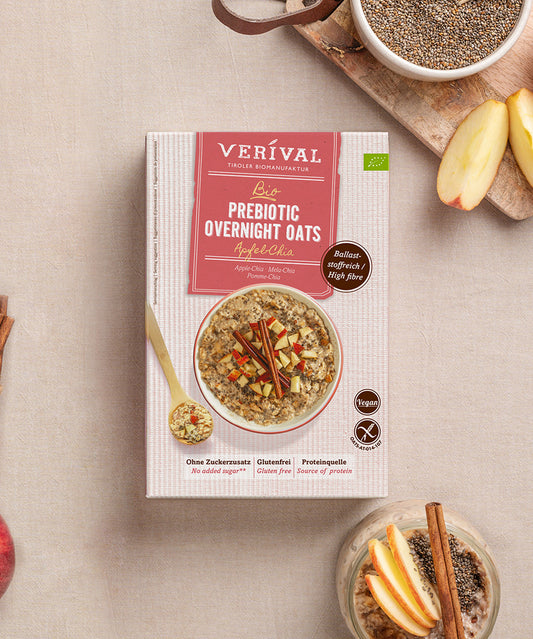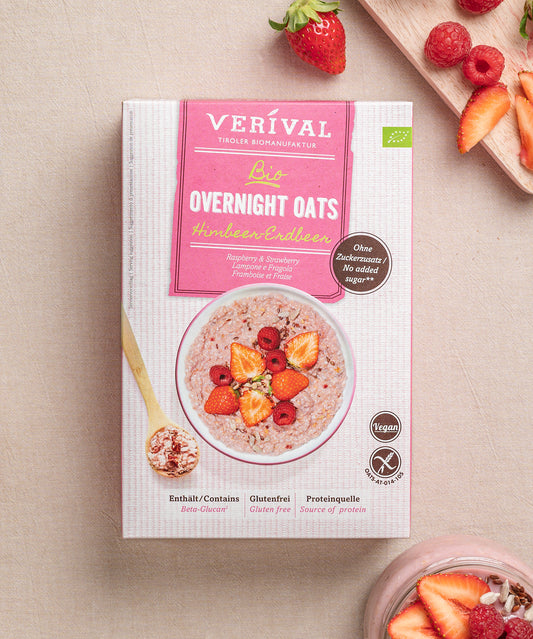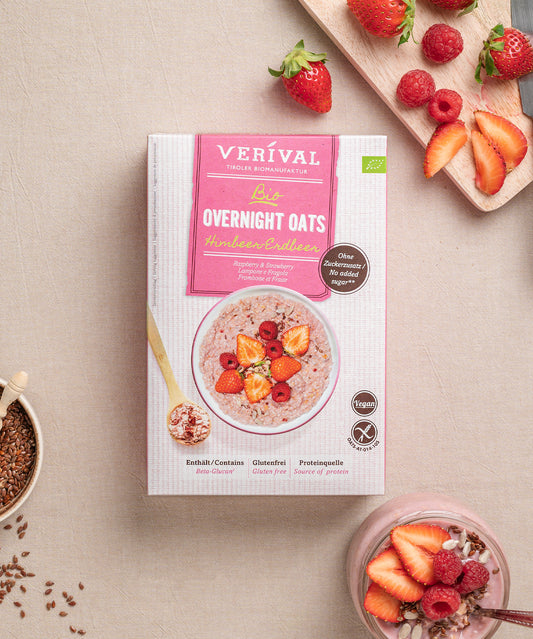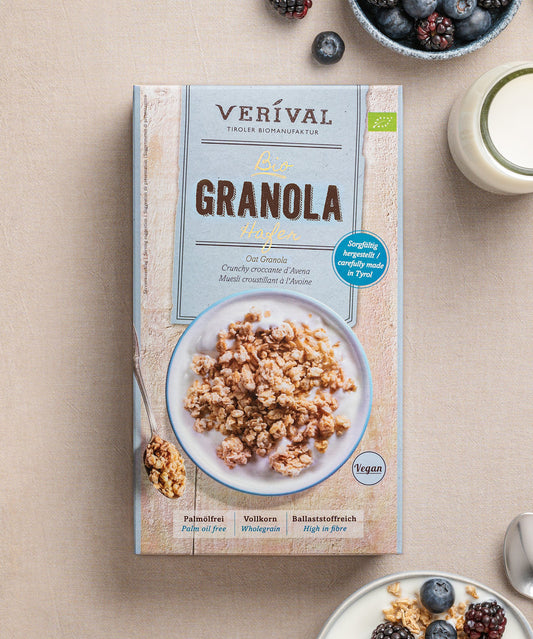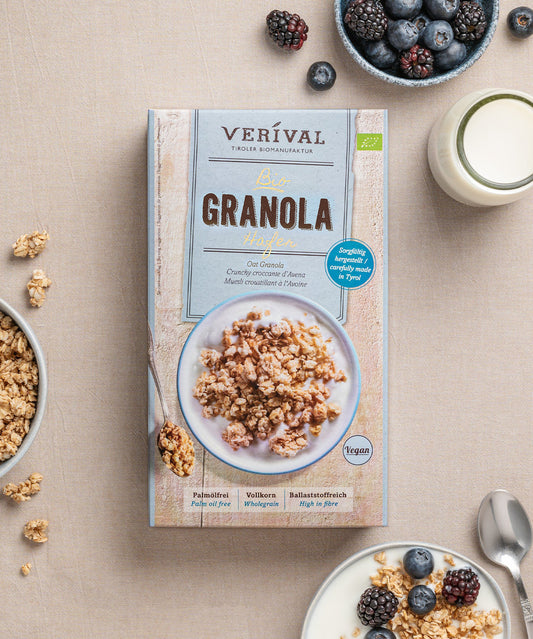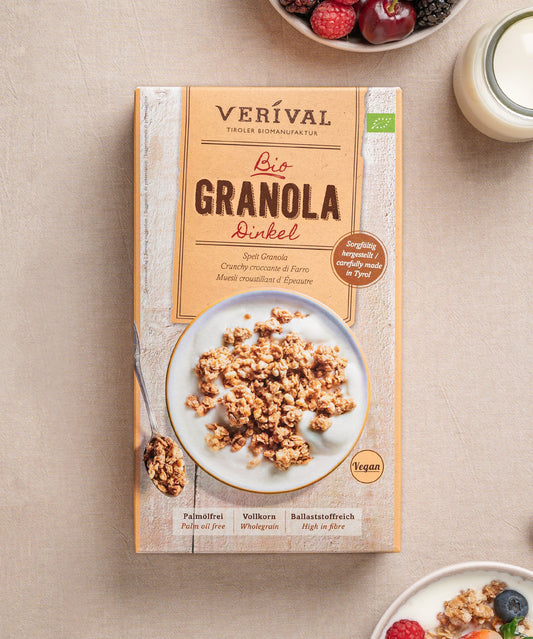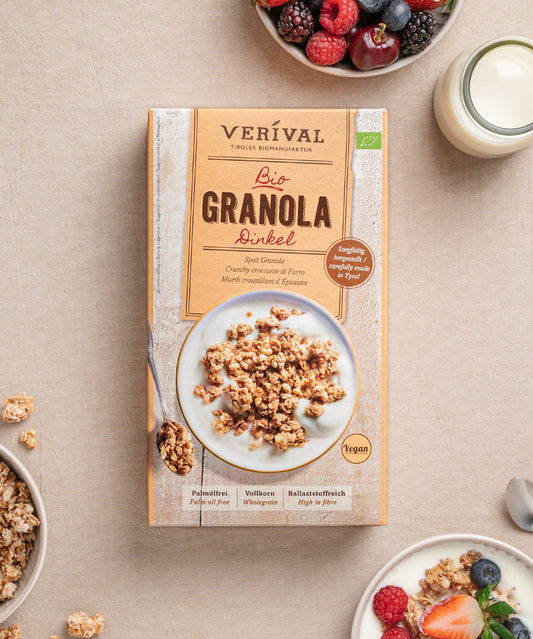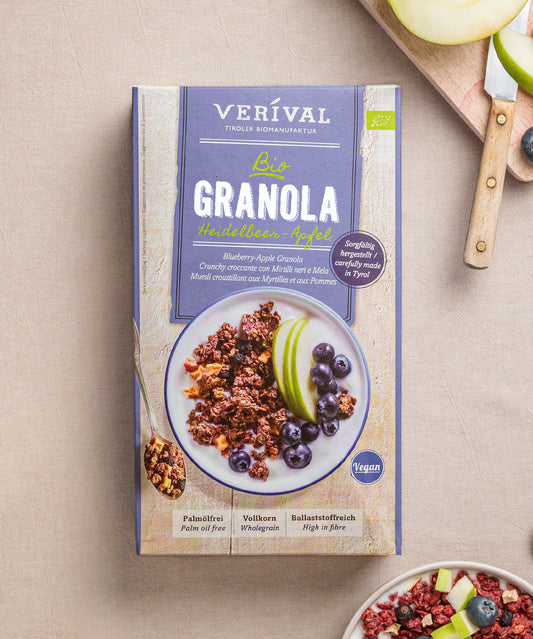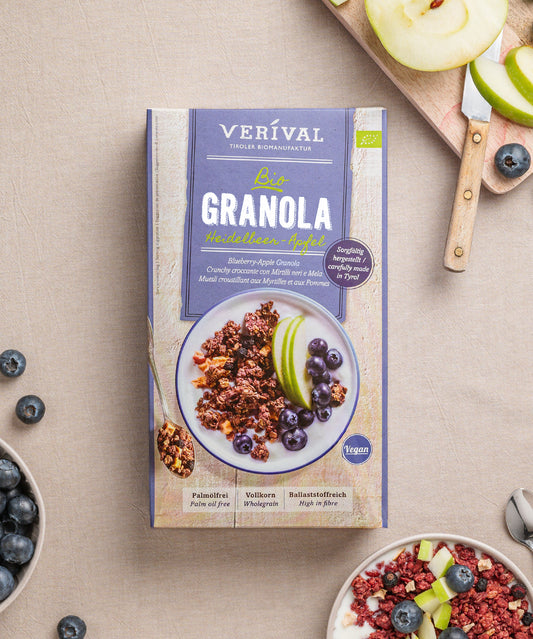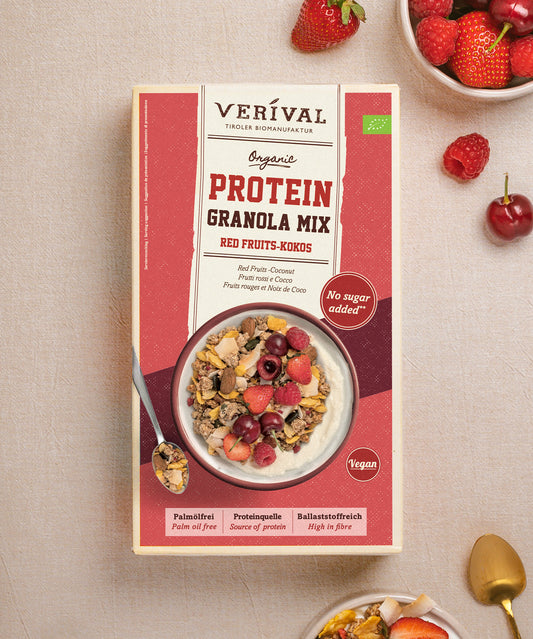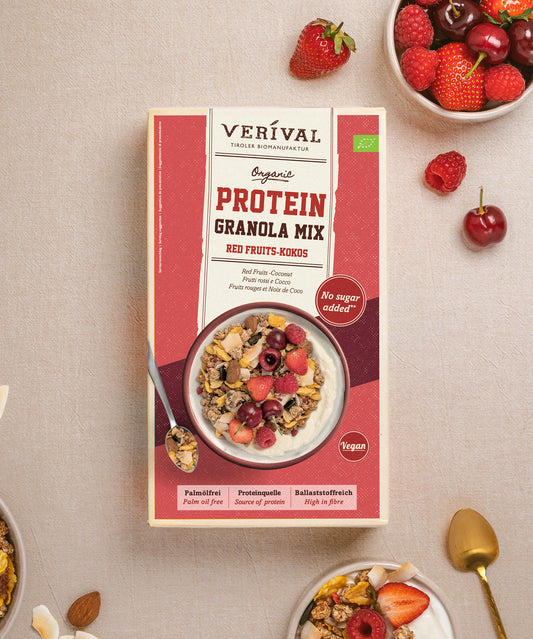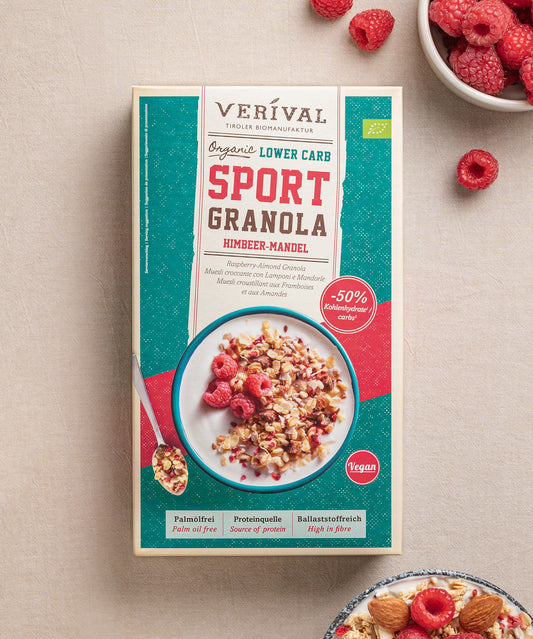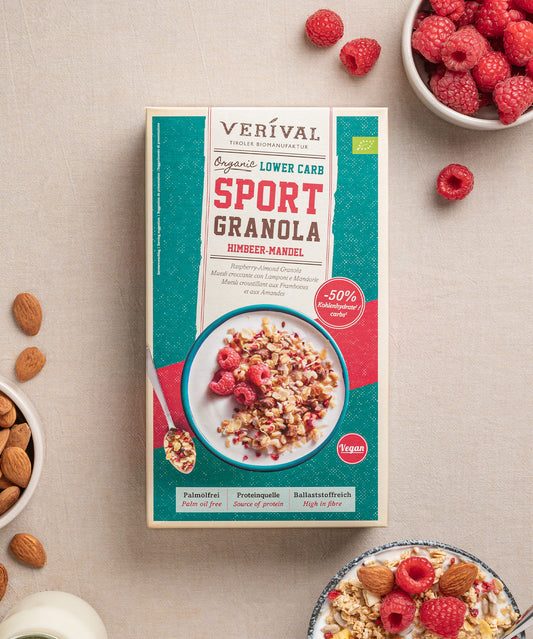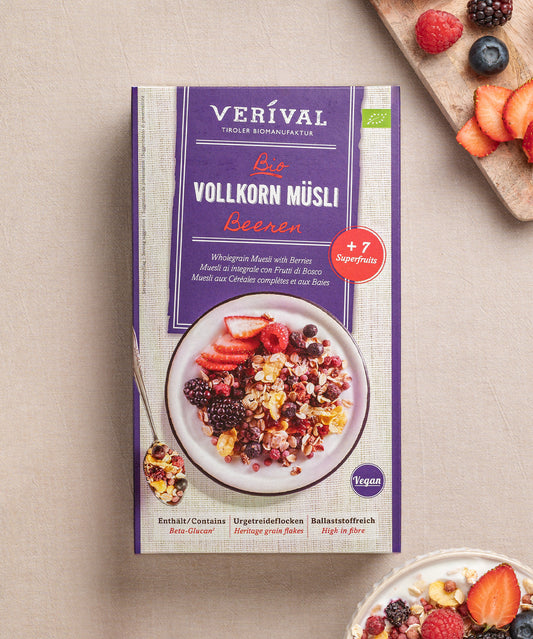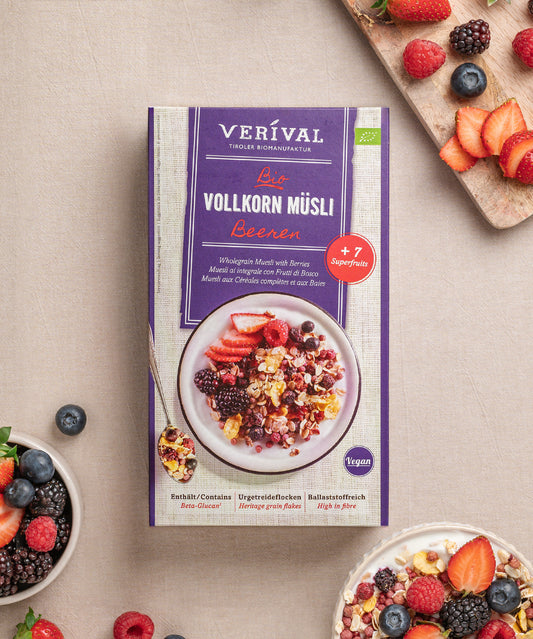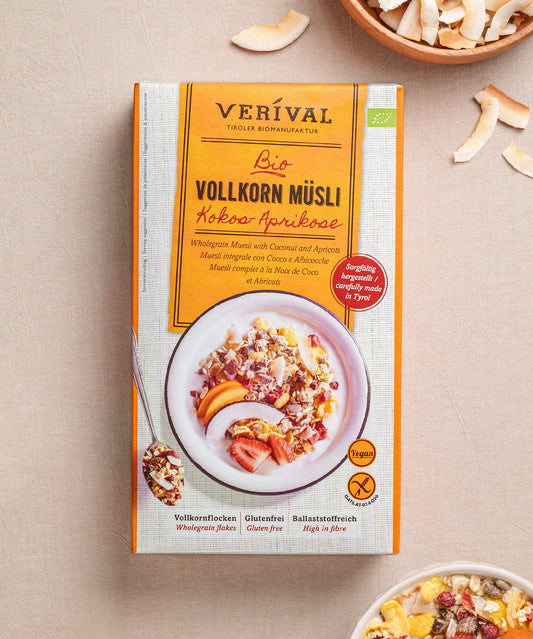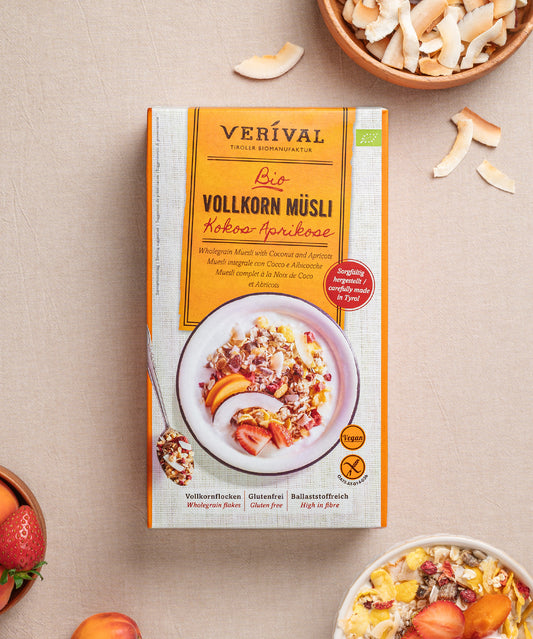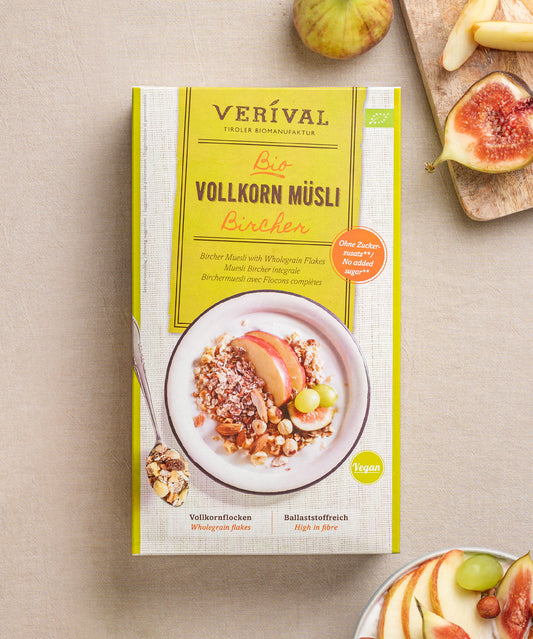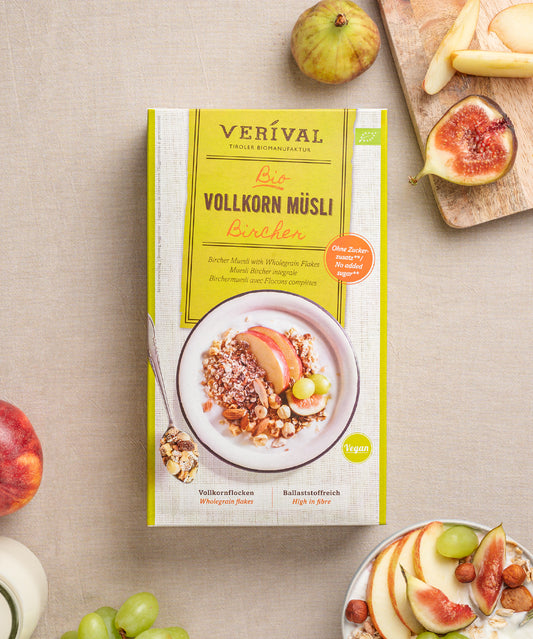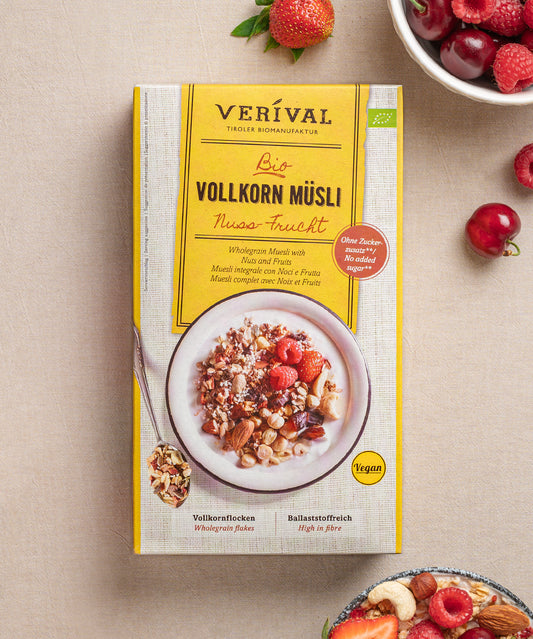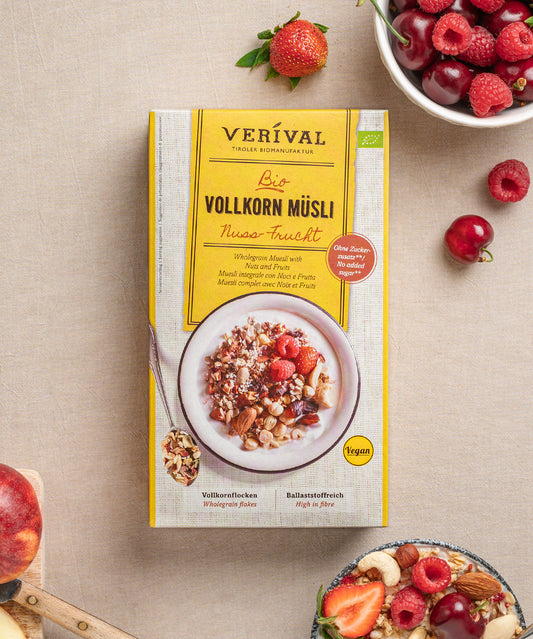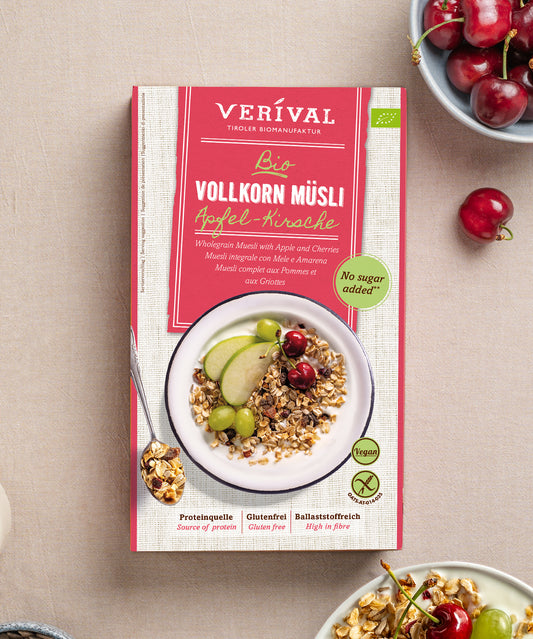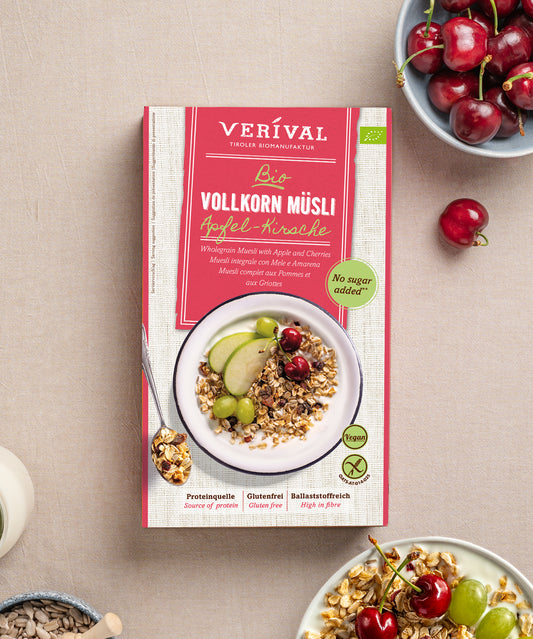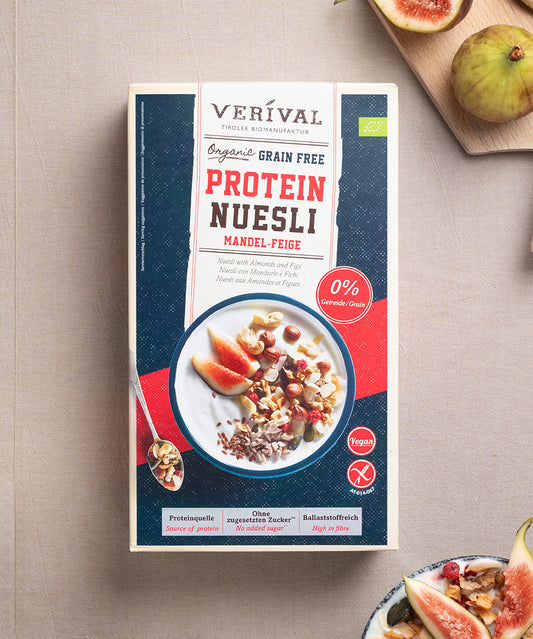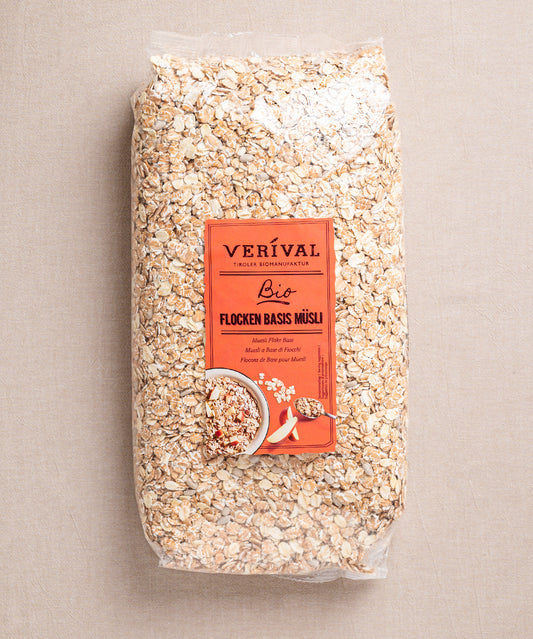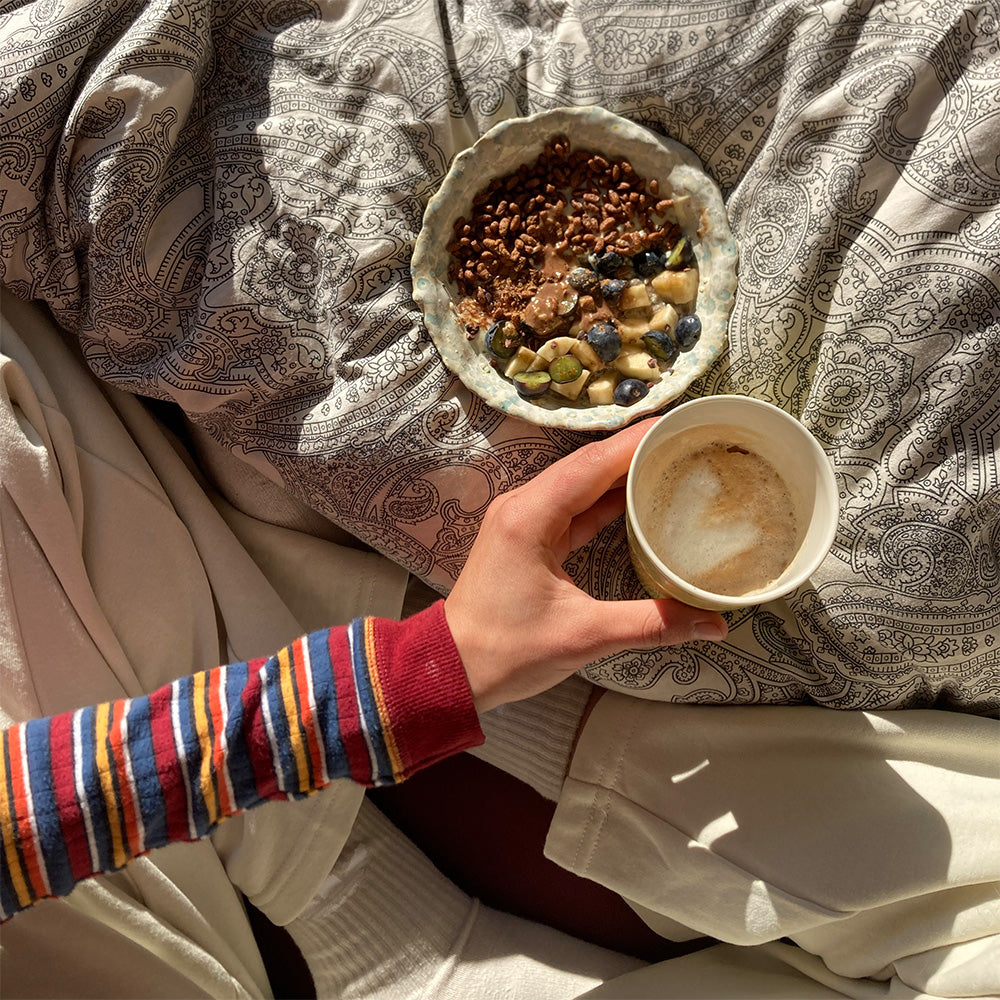Simply live better with a healthy organic breakfast from Tyrol.
-
Everything for your healthy & nutritious breakfast
-
Complex carbohydrates keep you full for up to 6 hours
-
From our own production in the Tyrolean Alps
-
Our products are 100% organic, purely natural & without additives
Our bestsellers
To the bestsellers-
Advent calendar box
5.0 / 5.0
5.0 5 total reviews
Regular price 44,90 €Regular priceUnit price 40,63 € / per 1000g1 Size available
-
Prebiotic Porridge Raspberry-Blueberry
5.0 / 5.0
5.0 16 total reviews
Regular price 5,49 €Regular priceUnit price 15,69 € / per 1000g2 Sizes available
-
Strawberry-Chia Porridge
4.96 / 5.0
4.96 24 total reviews
Regular price 5,49 €Regular priceUnit price 15,69 € / per 1000g3 Sizes available
-
Blueberry-Apple Porridge
4.89 / 5.0
4.89 9 total reviews
Regular price 5,49 €Regular priceUnit price 15,69 € / per 1000g3 Sizes available
-
Bircher Porridge
4.95 / 5.0
4.95 39 total reviews
Regular price 5,49 €Regular priceUnit price 15,69 € / per 1000g3 Sizes available
-
Protein Porridge Cocoa-Banana
5.0 / 5.0
5.0 14 total reviews
Regular price 5,99 €Regular priceUnit price 17,11 € / per 1000g3 Sizes available
-
Protein Granola Date-Almond
5.0 / 5.0
5.0 4 total reviews
Regular price 6,49 €Regular priceUnit price 19,97 € / per 1000g2 Sizes available
-
Berry Granola
5.0 / 5.0
5.0 21 total reviews
Regular price 4,99 €Regular priceUnit price 13,31 € / per 1000g3 Sizes available
-
Apple-Cinnamon Granola
5.0 / 5.0
5.0 16 total reviews
Regular price 4,99 €Regular priceUnit price 15,35 € / per 1000g3 Sizes available
-
Cocoa-Sour Cherry Granola
5.0 / 5.0
5.0 12 total reviews
Regular price 4,99 €Regular priceUnit price 15,35 € / per 1000g3 Sizes available
Top categories

We have been producing our organic products in the heart of Tyrol for over 30 years
Together with our motivated team of great organic friends, we have been making exceptional organic breakfasts in the Tyrolean Alps for 30 years, which provide you with all the important nutrients, are easy to prepare and of course taste great.
Porridge
To the porridge rangeThe ideal nutrient profile makes our organic porridge mixes powerful all-rounders. Porridge provides you with long-term energy, boosts your metabolism, strengthens your immune system and supports your muscle building.
-
Strawberry-Chia Porridge
4.96 / 5.0
4.96 24 total reviews
Regular price 5,49 €Regular priceUnit price 15,69 € / per 1000g3 Sizes available
-
Bircher Porridge
4.95 / 5.0
4.95 39 total reviews
Regular price 5,49 €Regular priceUnit price 15,69 € / per 1000g3 Sizes available
-
Blueberry-Apple Porridge
4.89 / 5.0
4.89 9 total reviews
Regular price 5,49 €Regular priceUnit price 15,69 € / per 1000g3 Sizes available
-
Prebiotic Porridge Raspberry-Blueberry
5.0 / 5.0
5.0 16 total reviews
Regular price 5,49 €Regular priceUnit price 15,69 € / per 1000g2 Sizes available
-
Prebiotic Overnight Oats Apple-Chia
5.0 / 5.0
5.0 5 total reviews
Regular price 5,49 €Regular priceUnit price 15,69 € / per 1000g1 Size available
-
Overnight Oats Raspberry-Strawberry
5.0 / 5.0
5.0 11 total reviews
Regular price 5,49 €Regular priceUnit price 15,69 € / per 1000g2 Sizes available
-
Matcha Porridge Date-Banana
5.0 / 5.0
5.0 9 total reviews
Regular price 5,49 €Regular priceUnit price 15,69 € / per 1000g1 Size available
-
Protein Porridge Cocoa-Banana
5.0 / 5.0
5.0 14 total reviews
Regular price 5,99 €Regular priceUnit price 17,11 € / per 1000g3 Sizes available
-
Protein Porridge Raspberry-Cocoa
5.0 / 5.0
5.0 10 total reviews
Regular price 6,49 €Regular priceUnit price 16,23 € / per 1000g2 Sizes available
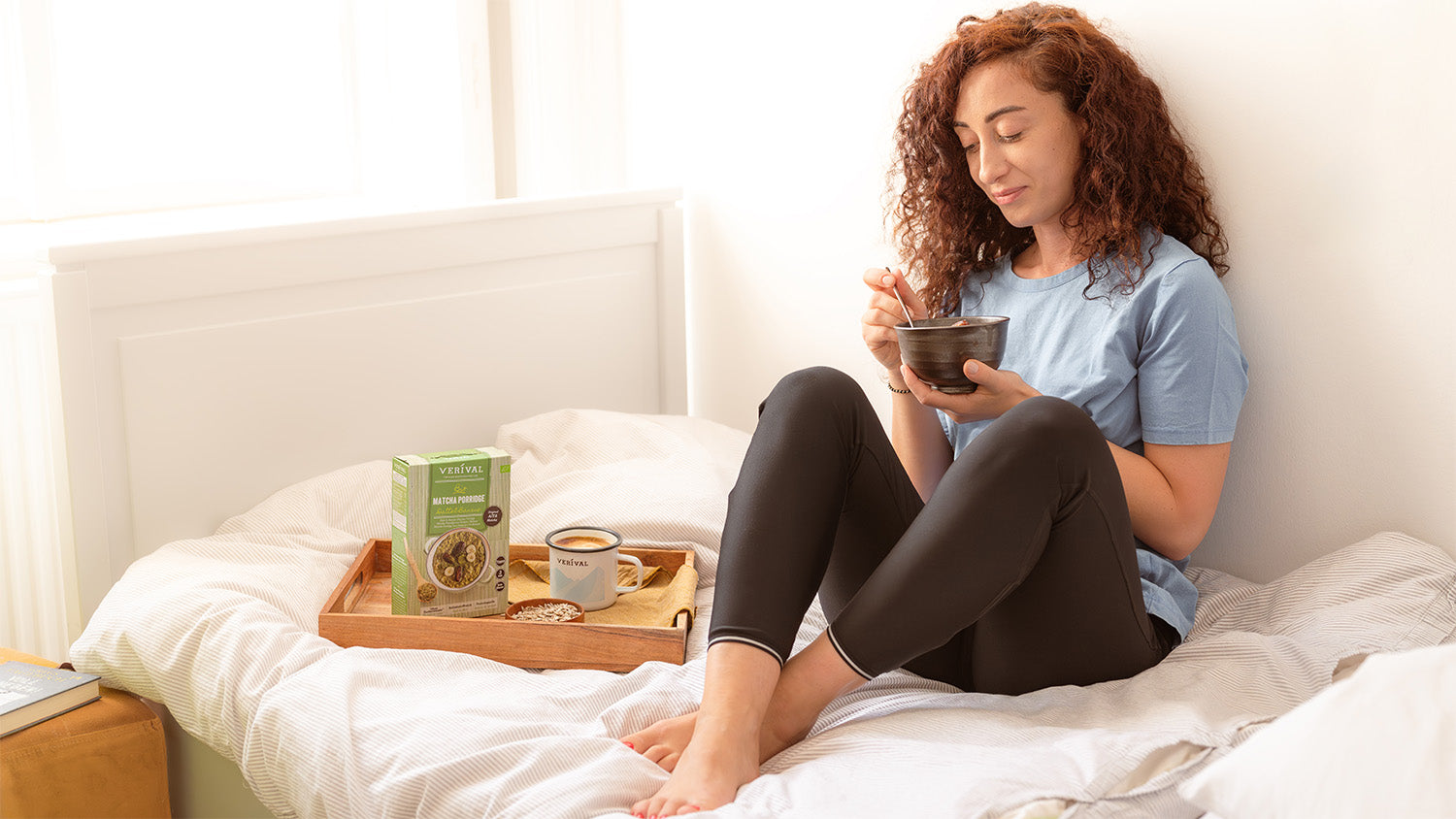
All nutrients in one bowl
Porridge provides you with the most important nutrients, proteins, vitamins and minerals in the morning. This makes it easier for you to maintain a balanced diet throughout the day.
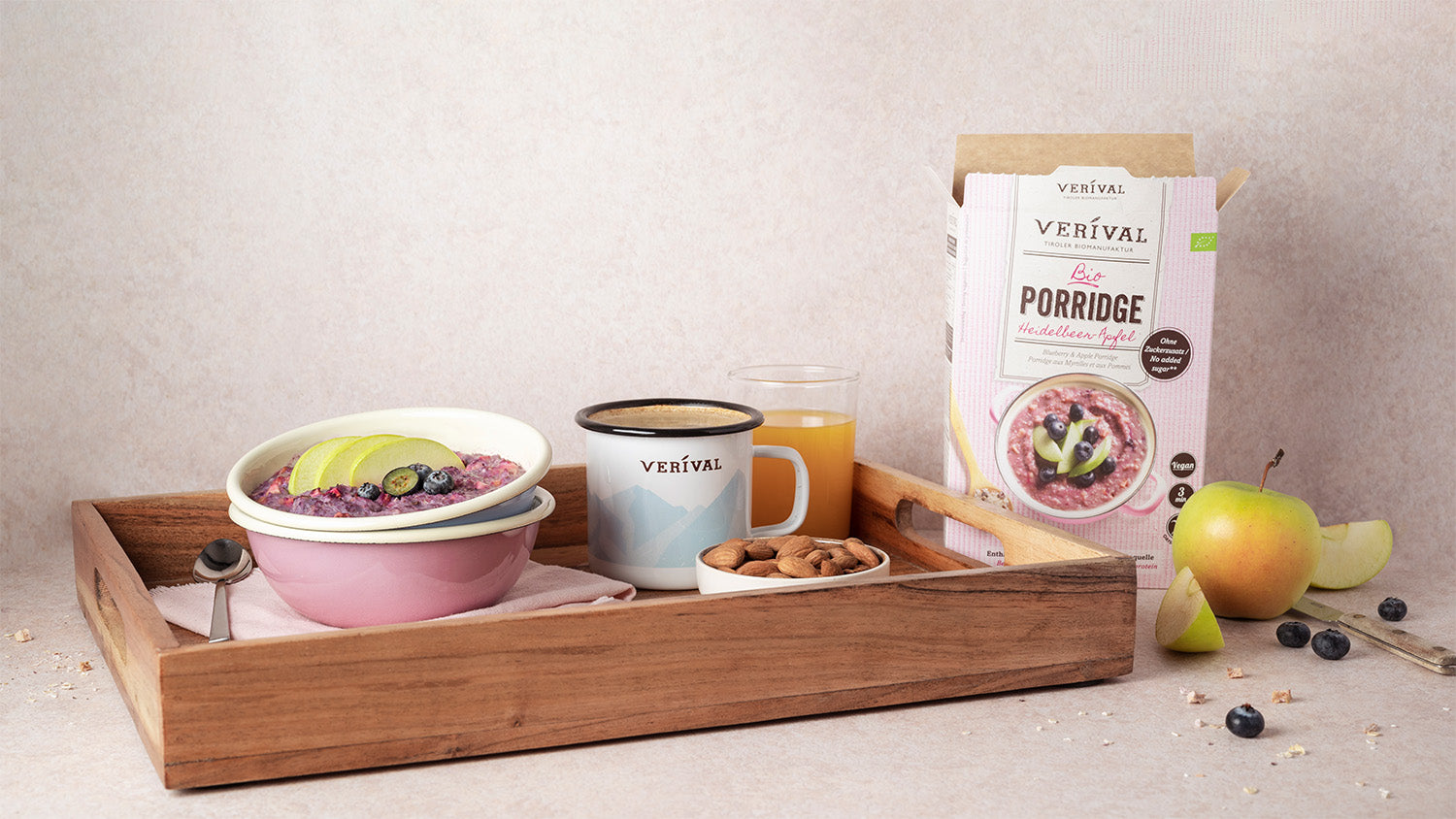
Your warm-up in the morning
The body has to use less energy to digest a warm breakfast. This relieves your organism, strengthens your immune system and boosts your metabolism. In addition, the nutrients can be better absorbed.

Whole grain for full energy
Wholegrain flakes form the basis of our crunchy granolas and mueslis. They are very high in fibre and therefore particularly digestible. Wholegrain flakes are also processed more slowly by the body, keeping you full for longer and preventing hunger pangs.
Granola
Zum Granola-SortimentGranola is oats baked with honey and is also known as crunchy muesli or crunchy. With a granola from Verival, you are doing something good for yourself and your body, because our crunchy mueslis not only taste delicious, but also consist of wholemeal flakes.
-
Berry Granola
5.0 / 5.0
5.0 21 total reviews
Regular price 4,99 €Regular priceUnit price 13,31 € / per 1000g3 Sizes available
-
Apple-Cinnamon Granola
5.0 / 5.0
5.0 16 total reviews
Regular price 4,99 €Regular priceUnit price 15,35 € / per 1000g3 Sizes available
-
Cocoa-Sour Cherry Granola
5.0 / 5.0
5.0 12 total reviews
Regular price 4,99 €Regular priceUnit price 15,35 € / per 1000g3 Sizes available
-
Oat Granola
5.0 / 5.0
5.0 5 total reviews
Regular price 4,99 €Regular priceUnit price 13,31 € / per 1000g1 Size available
-
Spelt Granola
5.0 / 5.0
5.0 4 total reviews
Regular price 4,99 €Regular priceUnit price 13,31 € / per 1000g3 Sizes available
-
Chocolate Crunchy
5.0 / 5.0
5.0 3 total reviews
Regular price 4,99 €Regular priceUnit price 13,31 € / per 1000g2 Sizes available
-
Honey Crunchy
5.0 / 5.0
5.0 9 total reviews
Regular price 4,99 €Regular priceUnit price 13,31 € / per 1000g2 Sizes available
-
Blueberry-Apple Granola
5.0 / 5.0
5.0 2 total reviews
Regular price 4,99 €Regular priceUnit price 15,35 € / per 1000g2 Sizes available
-
Fruit Crunchy Mix
4.8 / 5.0
4.8 5 total reviews
Regular price 4,99 €Regular priceUnit price 16,63 € / per 1000g3 Sizes available
-
Protein Granola Mix Red Fruits-Coconut
5.0 / 5.0
5.0 1 total reviews
Regular price 6,49 €Regular priceUnit price 21,63 € / per 1000g1 Size available
-
Protein Granola Date-Almond
5.0 / 5.0
5.0 4 total reviews
Regular price 6,49 €Regular priceUnit price 19,97 € / per 1000g2 Sizes available
-
Protein Lower Carb Granola Raspberry-Almond
5.0 / 5.0
5.0 3 total reviews
Regular price 6,49 €Regular priceUnit price 16,23 € / per 1000g1 Size available
Magazine
Alle Beiträge-

Wie gesund ist Mandelmilch wirklich?
Mandelmilch ist eine beliebte Alternative zu Kuhmilch, besonders für Veganer und Laktoseintolerante. Sie bietet viele gesundheitliche Vorteile, wie einen hohen Vitamin E-Gehalt und wenig Kalorien. Selbstgemachte Mandelmilch enthält keine Zusatzstoffe...
Dominik WendlWie gesund ist Mandelmilch wirklich?
Mandelmilch ist eine beliebte Alternative zu Kuhmilch, besonders für Veganer und Laktoseintolerante. Sie bietet viele gesundheitliche Vorteile, wie einen hohen Vitamin E-Gehalt und wenig Kalorien. Selbstgemachte Mandelmilch enthält keine Zusatzstoffe...
DDominik Wendl• -

Mandelmilch einfach selber machen
Mandelmilch selber machen ist einfacher als du vielleicht denkst! Ob für dein morgendliches Porridge, zum Backen oder Kochen – die Herstellung von Mandelmilch zu Hause bietet eine gesunde und umweltfreundliche...
Nadine PalmetshoferMandelmilch einfach selber machen
Mandelmilch selber machen ist einfacher als du vielleicht denkst! Ob für dein morgendliches Porridge, zum Backen oder Kochen – die Herstellung von Mandelmilch zu Hause bietet eine gesunde und umweltfreundliche...
NNadine Palmetshofer• -

Mandelmilch – alles was du darüber wissen solltest
Warum greifen immer mehr Menschen zu Mandelmilch als Alternative zur traditionellen Kuhmilch? Diese nussige Alternative bietet nicht nur einen angenehmen, milden Geschmack, sondern ist auch vielseitig in der Küche einsetzbar,...
Nadine PalmetshoferMandelmilch – alles was du darüber wissen solltest
Warum greifen immer mehr Menschen zu Mandelmilch als Alternative zur traditionellen Kuhmilch? Diese nussige Alternative bietet nicht nur einen angenehmen, milden Geschmack, sondern ist auch vielseitig in der Küche einsetzbar,...
NNadine Palmetshofer•
Muesli
Zum Müsli-SortimentMuesli in the morning is the ideal basis for a good start to the day. And because breakfast should never be boring, we at Verival have created an incredible variety of mueslis, Bircher muesli, toppings and cereals.
-
Berry Wholegrain Muesli
5.0 / 5.0
5.0 11 total reviews
Regular price 4,99 €Regular priceUnit price 15,35 € / per 1000g3 Sizes available
-
Coconut-Apricot Wholegrain Muesli
5.0 / 5.0
5.0 7 total reviews
Regular price 4,99 €Regular priceUnit price 15,35 € / per 1000g3 Sizes available
-
Bircher Wholegrain Muesli
5.0 / 5.0
5.0 5 total reviews
Regular price 4,99 €Regular priceUnit price 13,31 € / per 1000g2 Sizes available
-
Nuts-Fruits Wholegrain Muesli
5.0 / 5.0
5.0 1 total reviews
Regular price 4,99 €Regular priceUnit price 15,35 € / per 1000g1 Size available
-
Apple-Cherry Wholegrain Muesli
Regular price 4,99 €Regular priceUnit price 16,63 € / per 1000g1 Size available
-
Protein Muesli Strawberry-Sour Cherry
4.5 / 5.0
4.5 2 total reviews
Regular price 4,99 €Regular priceUnit price 16,63 € / per 1000g2 Sizes available
-
Grain Free Protein Nuesli Almond-Fig
5.0 / 5.0
5.0 7 total reviews
Regular price 6,49 €Regular priceUnit price 21,63 € / per 1000g3 Sizes available
-
Nuts Wholegrain Muesli
4.67 / 5.0
4.67 3 total reviews
Regular price 14,99 €Regular priceUnit price 9,99 € / per 1000g2 Sizes available
-
Muesli flake base
5.0 / 5.0
5.0 2 total reviews
Regular price 2,49 €Regular priceUnit price 4,98 € / per 1000g2 Sizes available
-
Free nutrition and recipe guide in German (e-book)
Regular price 0,00 €Regular priceUnit price / per1 Size available
-

Porridge mit Haferkleie – Grundrezept
Nicht auf ein warmes Frühstück verzichten und trotzdem etwas Neues ausprobieren? Wie wäre es dann mit Porridge aus Haferkleie? Diese unterscheidet sich nämlich nicht nur bei den Nährwerten, sondern auch...
Katharina HannPorridge mit Haferkleie – Grundrezept
Nicht auf ein warmes Frühstück verzichten und trotzdem etwas Neues ausprobieren? Wie wäre es dann mit Porridge aus Haferkleie? Diese unterscheidet sich nämlich nicht nur bei den Nährwerten, sondern auch...
KKatharina Hann• -

Haferbrei Rezept – bester Geschmack aus Haferfl...
Wie du nun einen einfachen Haferbrei zubereitest, erfährst du in diesem Rezept. Natürlich ist es dir überlassen, womit du die Speise garnierst. Hierfür empfehlen wir zum Beispiel Beeren oder andere...
Alexandra WiesingerHaferbrei Rezept – bester Geschmack aus Haferfl...
Wie du nun einen einfachen Haferbrei zubereitest, erfährst du in diesem Rezept. Natürlich ist es dir überlassen, womit du die Speise garnierst. Hierfür empfehlen wir zum Beispiel Beeren oder andere...
 Alexandra Wiesinger•
Alexandra Wiesinger• -

Rezept: Mandelmilch selber machen
Viele Menschen heutzutage wollen auf Kuhmilch verzichten. Als Alternative bieten sich Pflanzendrinks an. Da gibt es zum Beispiel den Haferdrink, die Haselnussmilch oder die Cashewmilch. Wie du deine Mandelmilch ganz...
Alexandra WiesingerRezept: Mandelmilch selber machen
Viele Menschen heutzutage wollen auf Kuhmilch verzichten. Als Alternative bieten sich Pflanzendrinks an. Da gibt es zum Beispiel den Haferdrink, die Haselnussmilch oder die Cashewmilch. Wie du deine Mandelmilch ganz...
 Alexandra Wiesinger•
Alexandra Wiesinger•
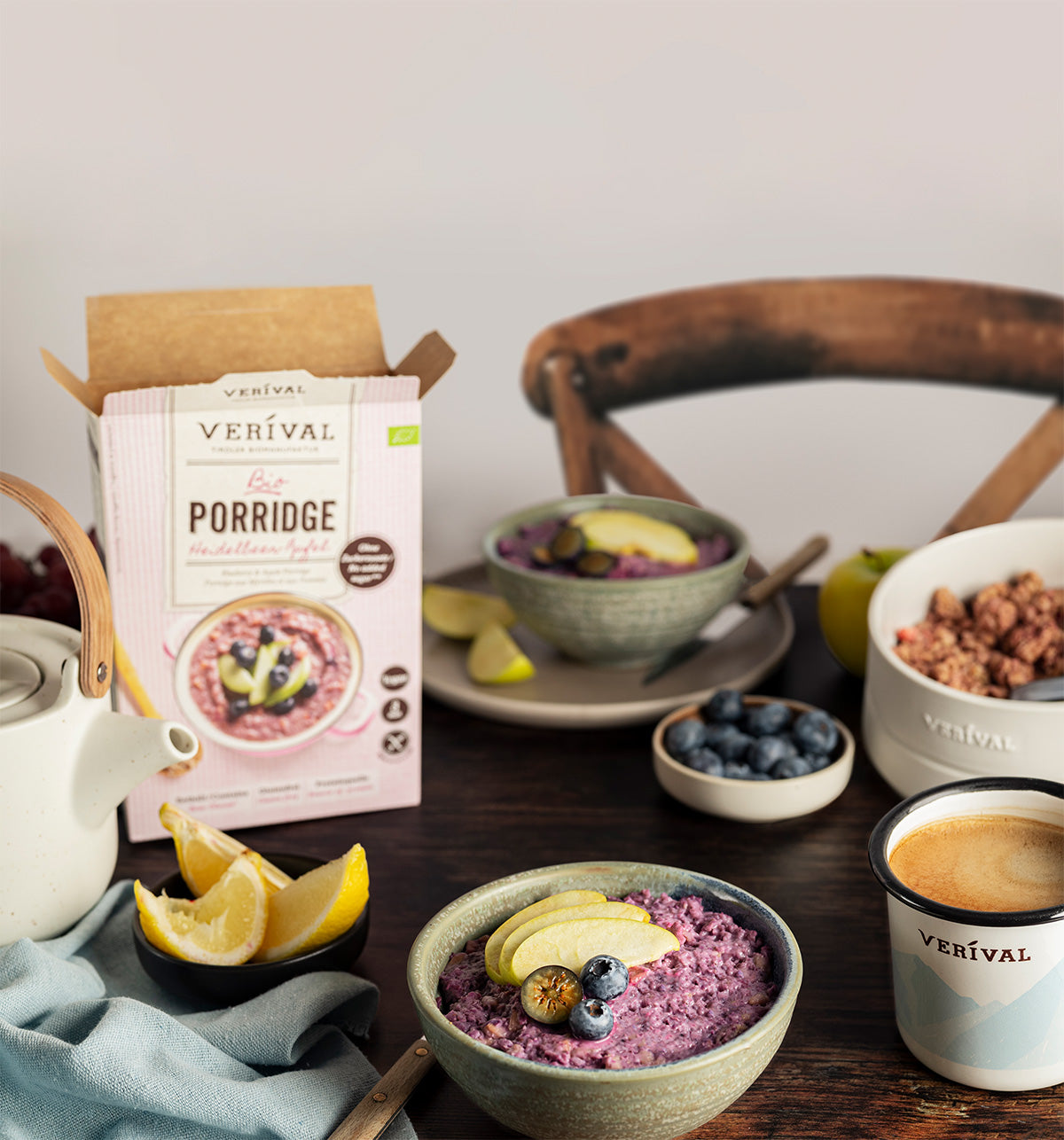
Start the day perfectly with VERIVAL
Verival is all about a healthy breakfast that gives you the perfect start to the day. Our products are rich in fibre and consist of high-quality ingredients such as oats, chia seeds, nuts and berries. Whether you prefer overnight oats or classic muesli - you can personalise your breakfast with our wide range of toppings. Use our calorie calculator and calculate your BMI to optimise your diet and enjoy it consciously. Verival stands for natural, sustainable products that give you energy and well-being.






